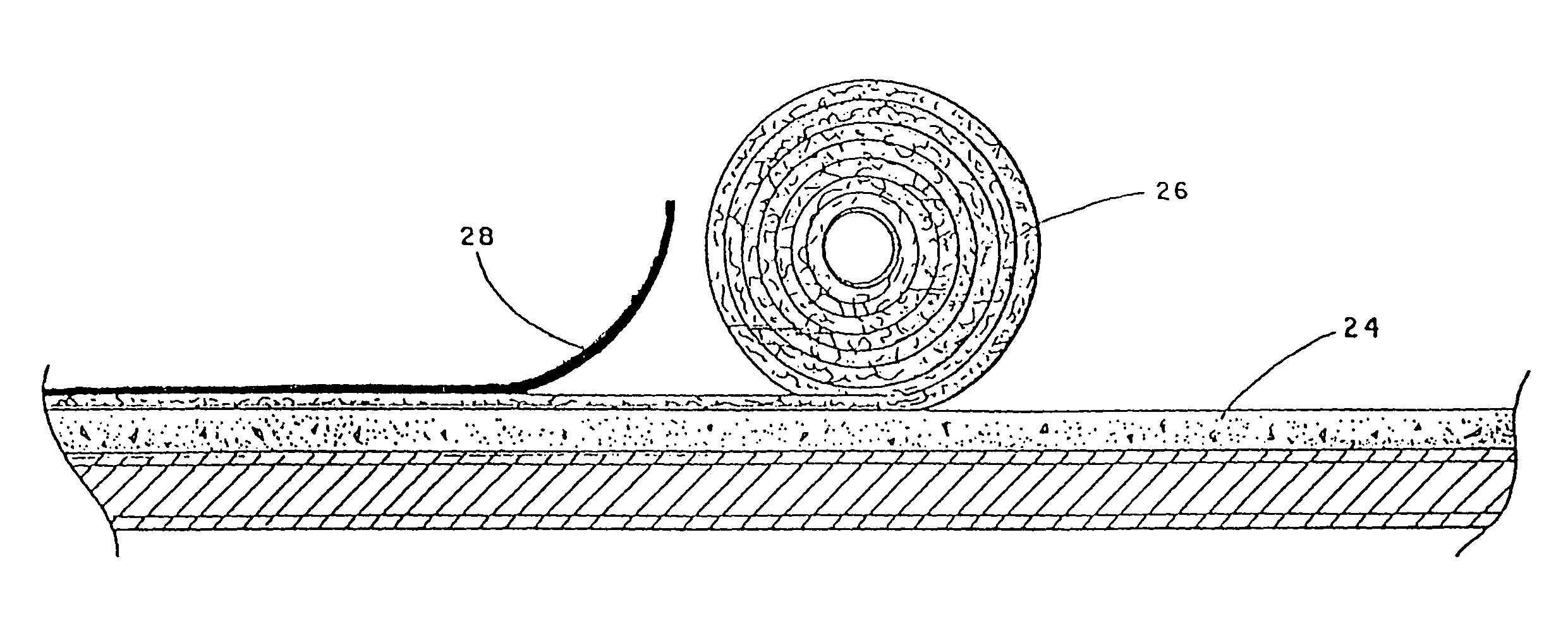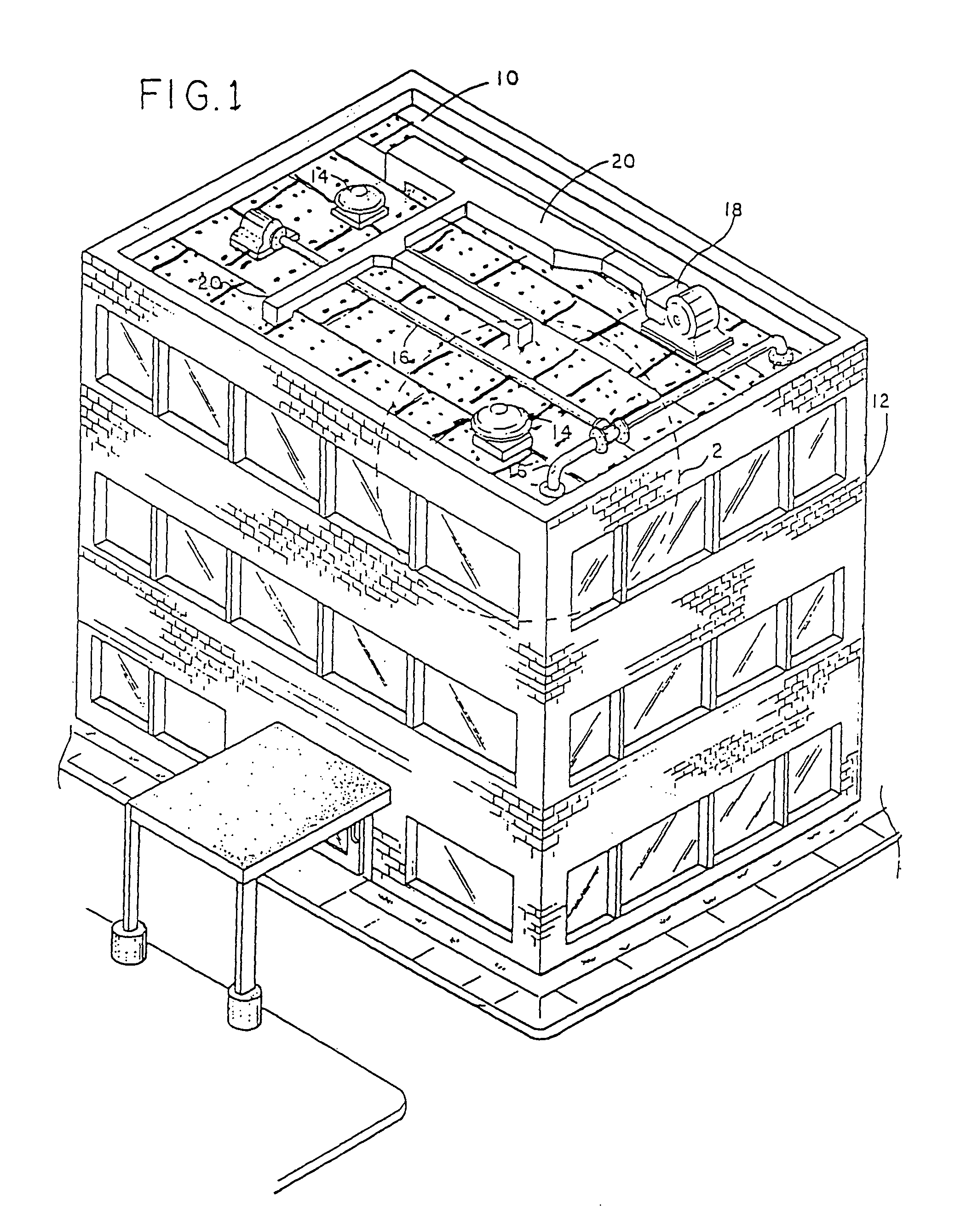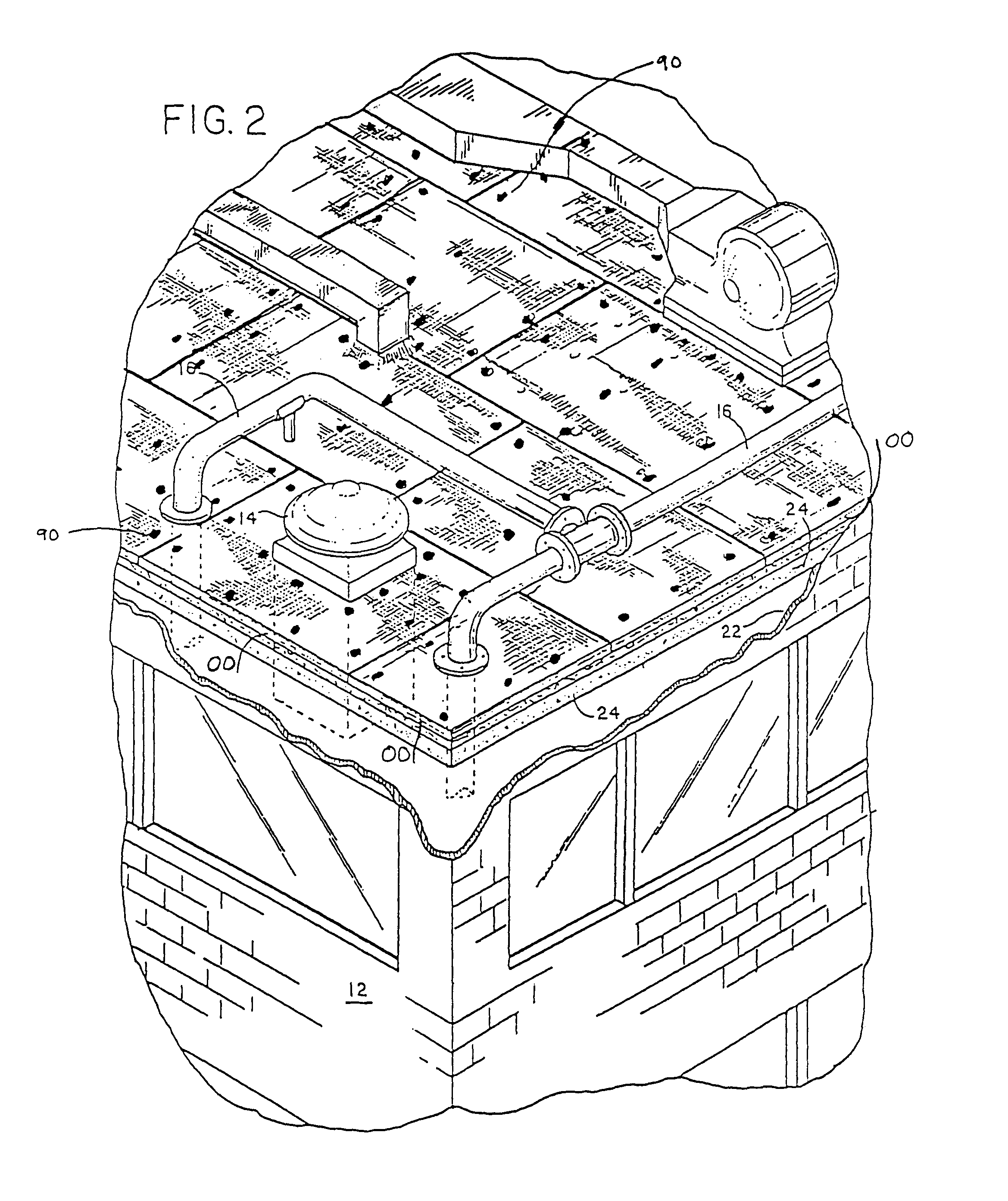Underlayment mat employed with a single-ply roofing system
a technology of roofing system and overlay mat, applied in the field of mat, can solve the problems of incompatibility of asphalt with single ply materials, heavy weight, and army of men to transport and install, and achieve the effects of reducing the number of mechanical fasteners, and eliminating mechanical stress at joints
- Summary
- Abstract
- Description
- Claims
- Application Information
AI Technical Summary
Benefits of technology
Problems solved by technology
Method used
Image
Examples
Embodiment Construction
[0035]The present invention improves over the prior art as shown in the drawings. Referring to FIG. 1, a typical roof top 10 of a commercial type building 12 is shown. This type of roof top 10 is generally flat. On this type of roof 10 are typically many roof penetrations; exhaust vents 14, piping 16, HVAC units 18, and duct work 20. The roofing underlayment mat of the present invention is easily installed around these and other roof obstacles.
[0036]FIG. 2 is a breakaway view of the roof shown in FIG. 1 at circle 2, a portion of the wall 22 being removed in order to show the prior art rigid board stock insulation 00 installed in preparation for the roofing membrane. Specifically, the roof top 10 contains a structural deck 24 upon which the prior art, conventional board stock insulation 00 discussed in detail hereinbefore. The rigid board stock insulation 00 is cut and fitted around the roof penetrations (e.g. 14, 16) such that it lays flat on the roof and is then secured with fasten...
PUM
| Property | Measurement | Unit |
|---|---|---|
| flexible | aaaaa | aaaaa |
| thickness | aaaaa | aaaaa |
| density | aaaaa | aaaaa |
Abstract
Description
Claims
Application Information
 Login to View More
Login to View More - R&D
- Intellectual Property
- Life Sciences
- Materials
- Tech Scout
- Unparalleled Data Quality
- Higher Quality Content
- 60% Fewer Hallucinations
Browse by: Latest US Patents, China's latest patents, Technical Efficacy Thesaurus, Application Domain, Technology Topic, Popular Technical Reports.
© 2025 PatSnap. All rights reserved.Legal|Privacy policy|Modern Slavery Act Transparency Statement|Sitemap|About US| Contact US: help@patsnap.com



